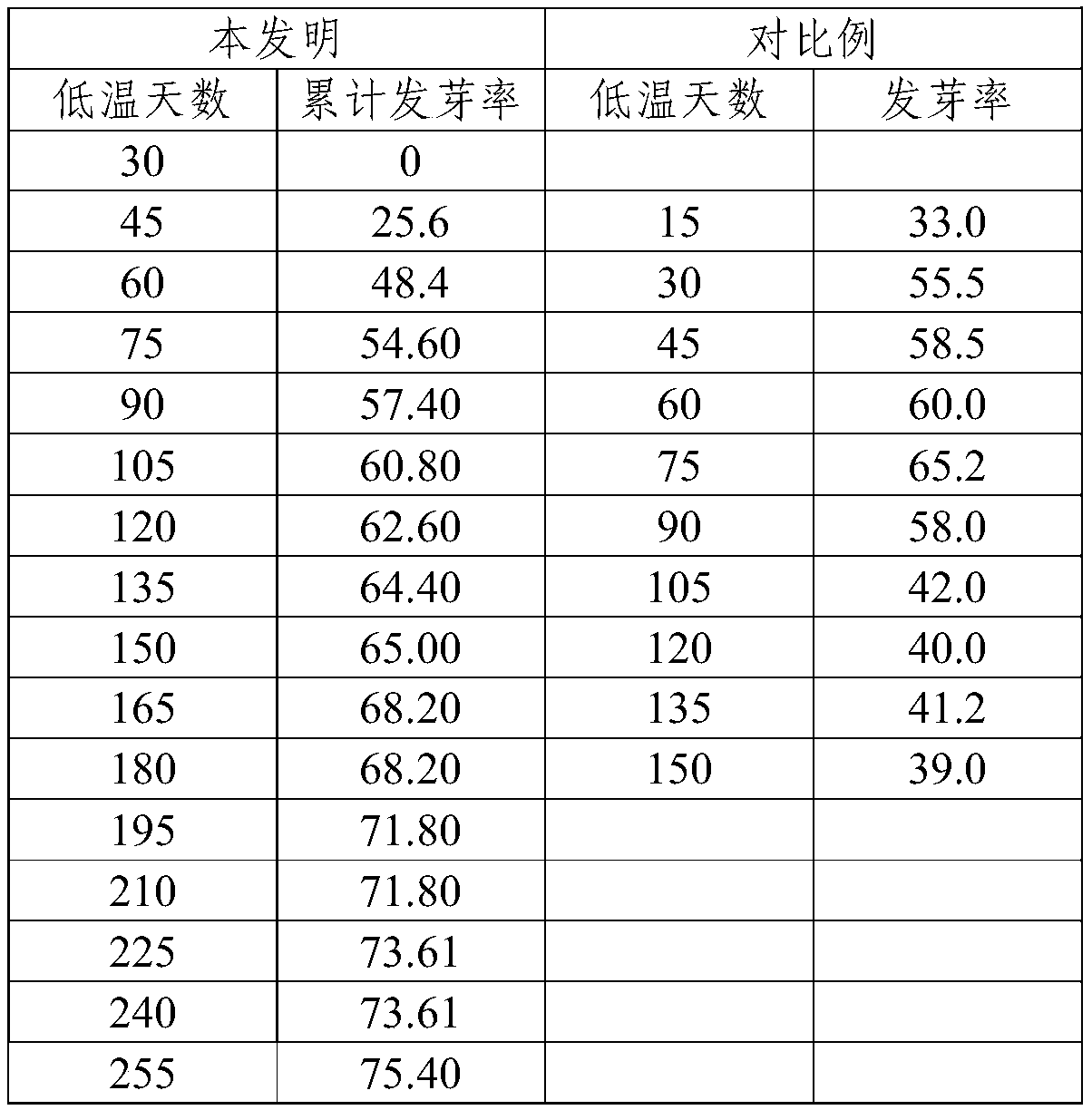Method for detecting dormancy degree of seed of phellodendron amurense Rupr. at constant temperature and application thereof
A seed and degree technology, applied in the field of constant temperature detection of the dormancy degree of Phellodendron chinensis seeds, can solve the problems that little attention is paid to the degree of seed dormancy, differences, etc., and achieve the effect of avoiding the increase of experimental cost, simple operation and ensuring accuracy.
- Summary
- Abstract
- Description
- Claims
- Application Information
AI Technical Summary
Problems solved by technology
Method used
Image
Examples
Embodiment 1
[0040] The present embodiment provides a kind of method that constant temperature detects the dormancy degree of Phellodendron amurense seed, specifically as follows:
[0041] 1. Take the newly harvested Phellodendron amurense fruit, peel off the Phellodendron amurense seeds from the fruit, wash, dry, and store at room temperature for more than 30 days;
[0042]2. Soak the Phellodendron amurense seeds in water for 24 hours, put them into low temperature treatment at 4°C and set up 5 repeated groups, each with 100 seeds;
[0043] 3. With the seed coat crack, the white radicle is visible as the seed germination sign. From the 45th day, observe and record the number of germinated seeds every 15 days, and take out the germinated seeds until more than 90% of the seeds germinate.
[0044] The detection result of present embodiment gained is shown in Table 1:
[0045] Table 1
[0046]
45 days
60 days
75 days
90 days
repeat group 1
30 capsules
...
Embodiment 2
[0051] The present embodiment provides a kind of method that constant temperature detects the dormancy degree of Phellodendron amurense seed, specifically as follows:
[0052] 1. Take the newly harvested Phellodendron amurense fruit, peel off the Phellodendron amurense seeds from the fruit, wash, dry, and store at room temperature for more than 30 days;
[0053] 2. Soak the Phellodendron amurense seeds in water for 24 hours, place them in a low-temperature treatment at 6°C and set up 5 repetition groups, with 100 seeds in each group;
[0054] 3. With the seed coat crack, the white radicle is visible as the seed germination sign. From the 45th day, observe and record the number of germinated seeds every 15 days, and take out the germinated seeds until more than 90% of the seeds germinate.
[0055] The detection result of present embodiment gained is shown in Table 2:
[0056] Table 2
[0057]
45 days
60 days
75 days
90 days
repeat group 1
2...
Embodiment 3
[0061] The present embodiment provides a kind of method that constant temperature detects the dormancy degree of Phellodendron amurense seed, specifically as follows:
[0062] 1. Take the newly harvested Phellodendron amurense fruit, peel off the Phellodendron amurense seeds from the fruit, wash, dry, and store at room temperature for more than 30 days;
[0063] 2. Soak the Phellodendron amurense seeds in water for 32 hours, place them in a low-temperature treatment at 4°C and set up 5 repetition groups, with 100 seeds in each group;
[0064] 3. With the seed coat crack, the white radicle is visible as the seed germination sign. From the 45th day, observe and record the number of germinated seeds every 15 days, and take out the germinated seeds until more than 90% of the seeds germinate.
[0065] The detection result of present embodiment gained is shown in Table 3:
[0066] table 3
[0067]
45 days
60 days
75 days
90 days
repeat group 1
2...
PUM
 Login to View More
Login to View More Abstract
Description
Claims
Application Information
 Login to View More
Login to View More - Generate Ideas
- Intellectual Property
- Life Sciences
- Materials
- Tech Scout
- Unparalleled Data Quality
- Higher Quality Content
- 60% Fewer Hallucinations
Browse by: Latest US Patents, China's latest patents, Technical Efficacy Thesaurus, Application Domain, Technology Topic, Popular Technical Reports.
© 2025 PatSnap. All rights reserved.Legal|Privacy policy|Modern Slavery Act Transparency Statement|Sitemap|About US| Contact US: help@patsnap.com

